Tutorial Included | MIT and Others Launch BindCraft, Which Directly Calls AF2 to Achieve Intelligent Design of Protein Binding Complexes
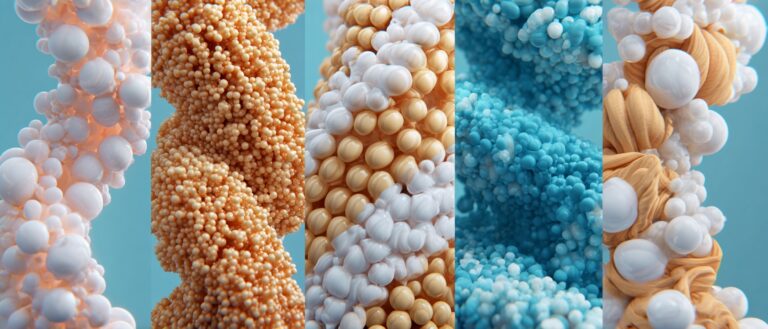
In living systems, proteins rarely perform their biological functions alone, but rely on protein-protein interactions (PPIs) to execute complex biological processes.Designing protein conjugates that can specifically target and regulate PPIs has enormous therapeutic and biotechnological potential.However, traditional methods for generating protein binders, such as immunization, antibody library screening, or directed evolution, are often laborious and time-consuming, and offer limited control over the target site.
Computational protein design offers a powerful alternative to tailor binders to specific targets and binding sites.andAlthough early computational methods (such as Rosetta) attempted to combine interface design through physical modeling and side chain optimization, the success rate was often less than 0.1%.In the era of deep learning, structure prediction models such as AlphaFold2 have completely changed this situation. They can not only accurately predict the three-dimensional folding structure of individual proteins, but also simulate the spatial interactions of protein complexes.
But this is still not a true “intelligent design”. Existing methods, such as RFdiffusion or ProteinMPNN,It is still necessary to manually set the skeleton and docking interface, and then use AlphaFold to verify whether it is reasonable.So, since AlphaFold can already understand protein structure, can it be allowed to "think" in reverse and directly generate a new protein that perfectly matches the target?
Based on this,A team from the Swiss Federal Institute of Technology in Lausanne (EPFL) and the Massachusetts Institute of Technology (MIT) proposed an open source automated process, BindCraft, for designing protein binders from scratch. The core idea is to backpropagate the hallucinated binder sequence through the AlphaFold2 weights and calculate the error gradient.The research team combined a multi-body version of AlphaFold2 with a neural network to simultaneously generate the protein's structure, sequence, and interface through gradient optimization. This enabled the generation of de novo binders with nanomolar affinity in silico, without the need for high-throughput screening, experimental iteration, or even a known binding site.
Experimental results show that BindCraft has achieved breakthrough results in 12 targets with complex structures and great pharmacological significance.The experimental success rate ranges from 10% to 100%, with an average success rate of 46.3%.This means that design work that previously required hundreds or even thousands of screenings can now obtain a usable combination with just one calculation.
Currently, "BindCraft: Protein Binder Design" is now available on the HyperAI official website in the "Tutorials" section. Click the link below to experience the one-click deployment tutorial ⬇️
Tutorial Link:
Demo Run
1. On the hyper.ai homepage, select the Tutorials page, choose BindCraft: Protein Binder Design, and click Run this tutorial online.
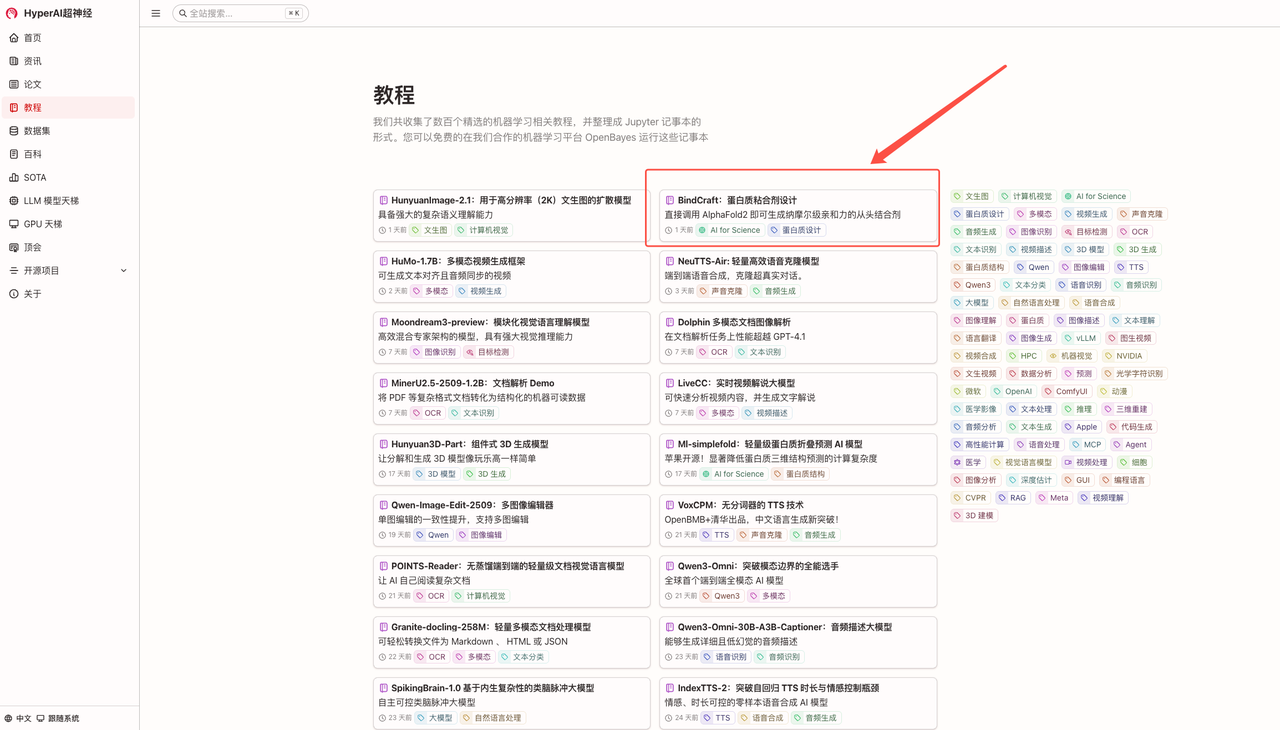
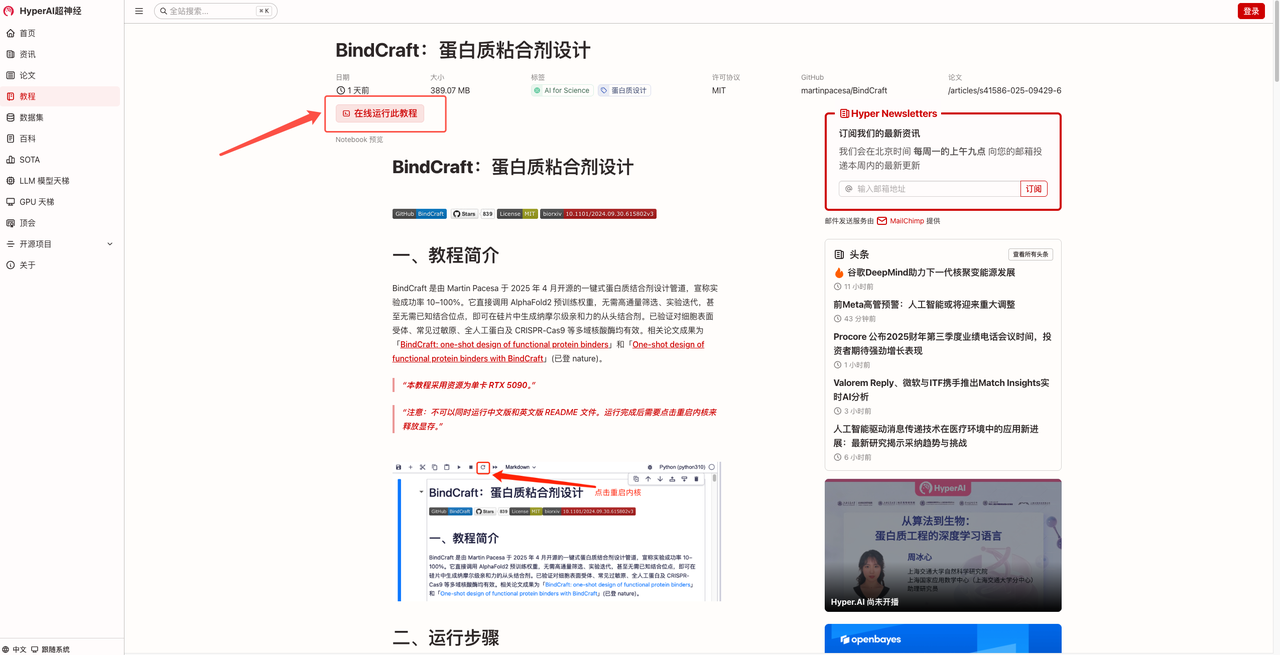
2. After the page jumps, click "Clone" in the upper right corner to clone the tutorial into your own container.
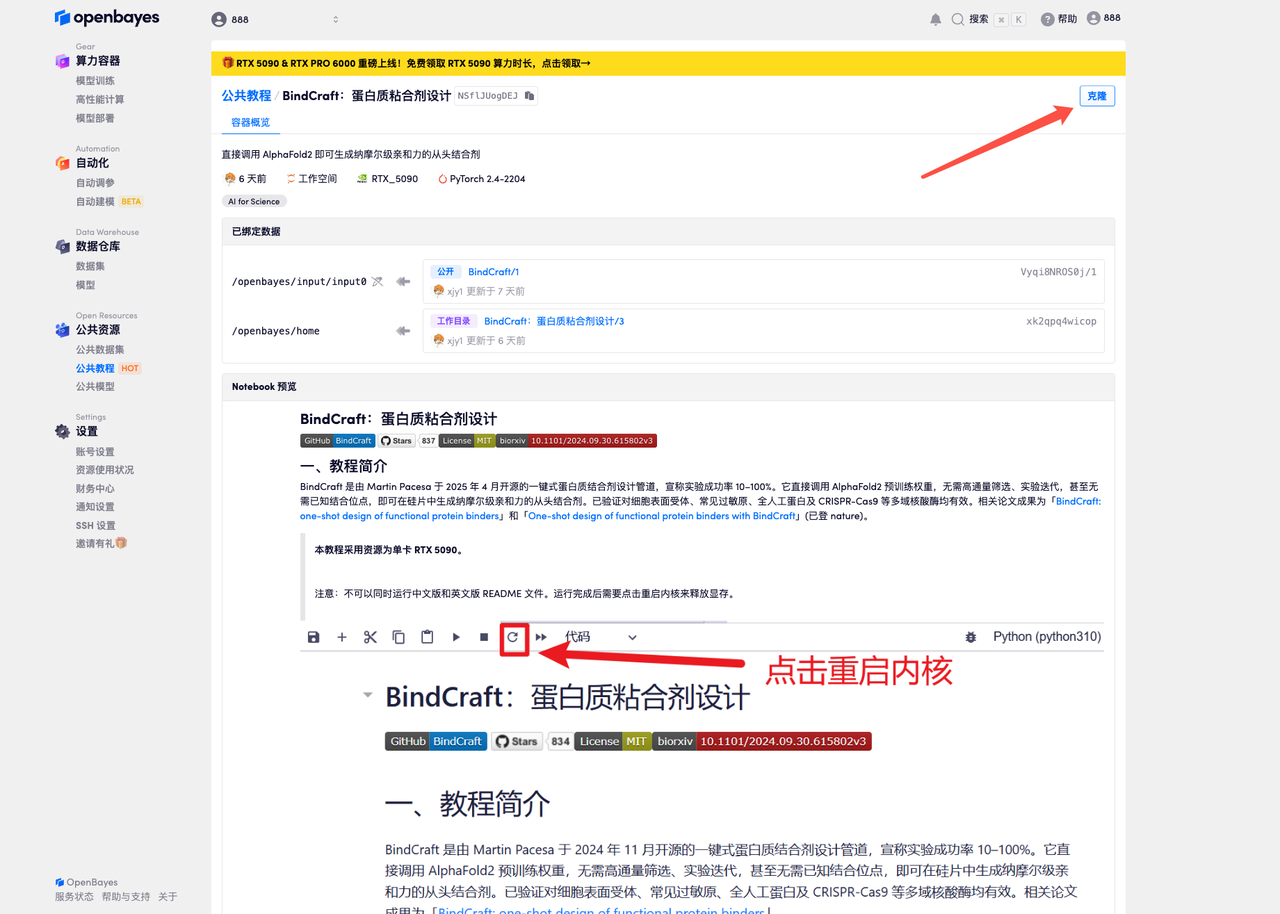
3. Select the NVIDIA GeForce RTX 5090 and PyTorch images and click Continue. The OpenBayes platform offers four billing options: pay-as-you-go or daily/weekly/monthly plans. New users can register using the invitation link below to receive 4 hours of free RTX 5090 and 5 hours of free CPU time!
HyperAI exclusive invitation link (copy and open in browser):
https://openbayes.com/console/signup?r=Ada0322_NR0n
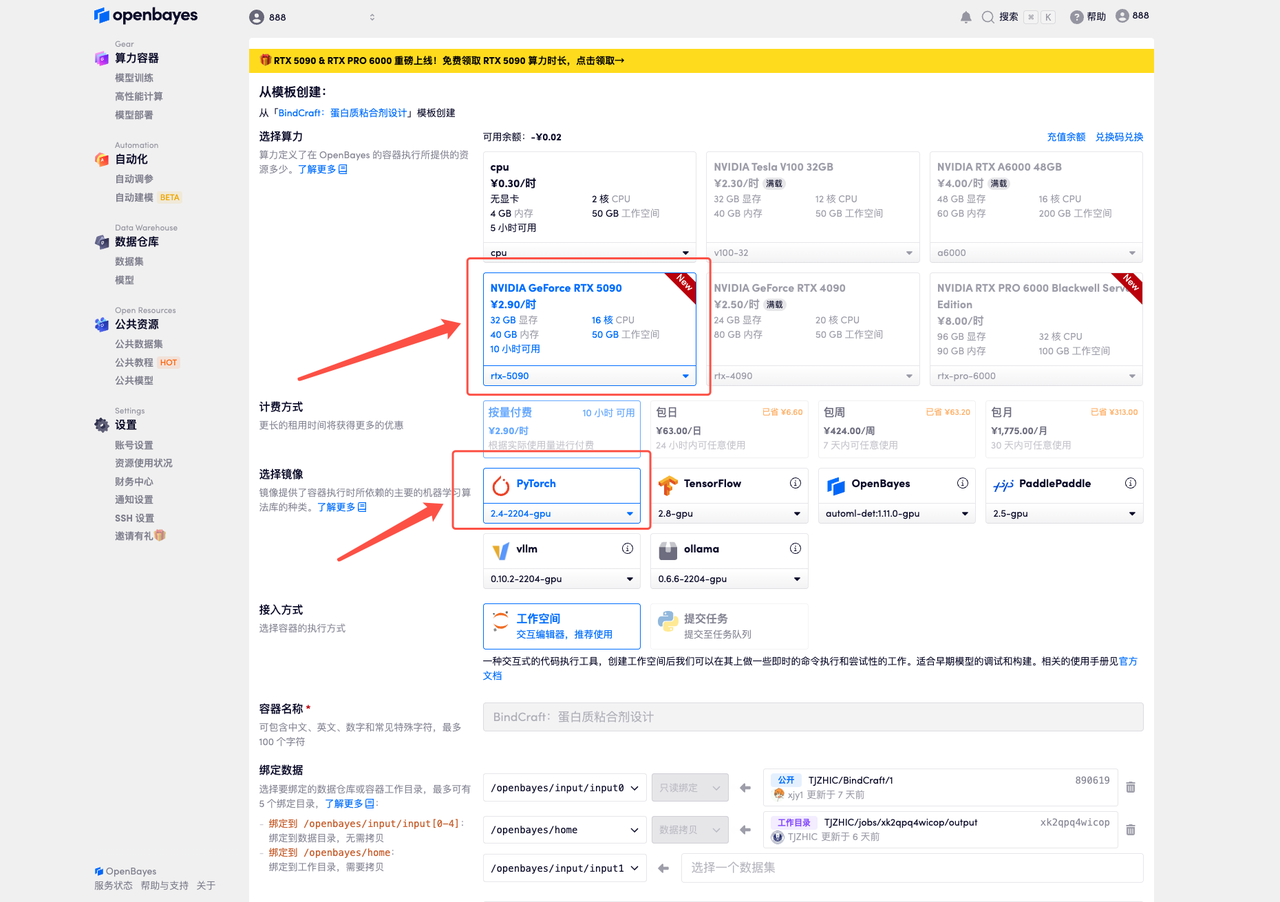
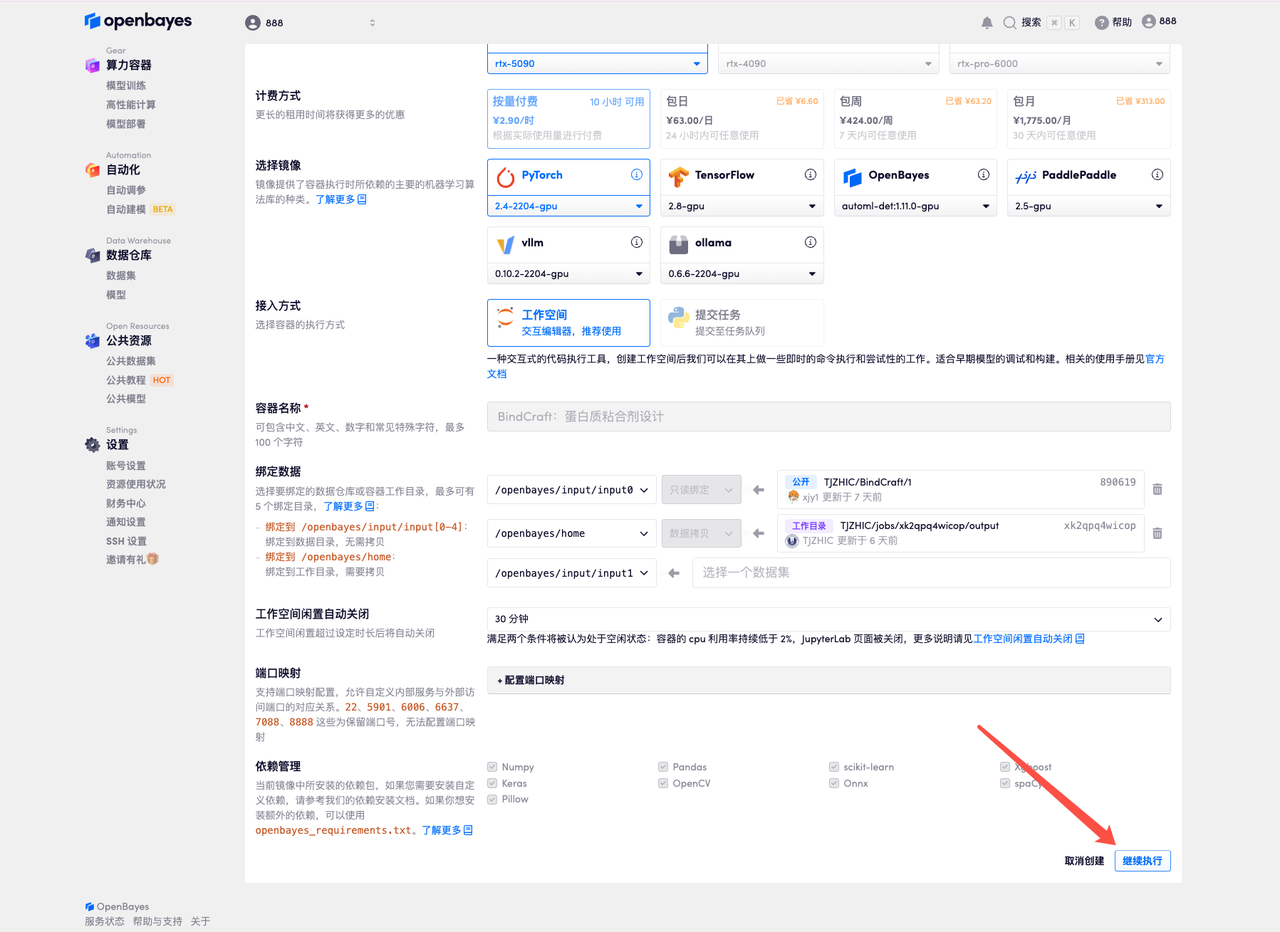
4. Wait for resources to be allocated. The first clone will take about 2 minutes. When the status changes to "Running", click "Open Workspace" to jump to the Demo page.
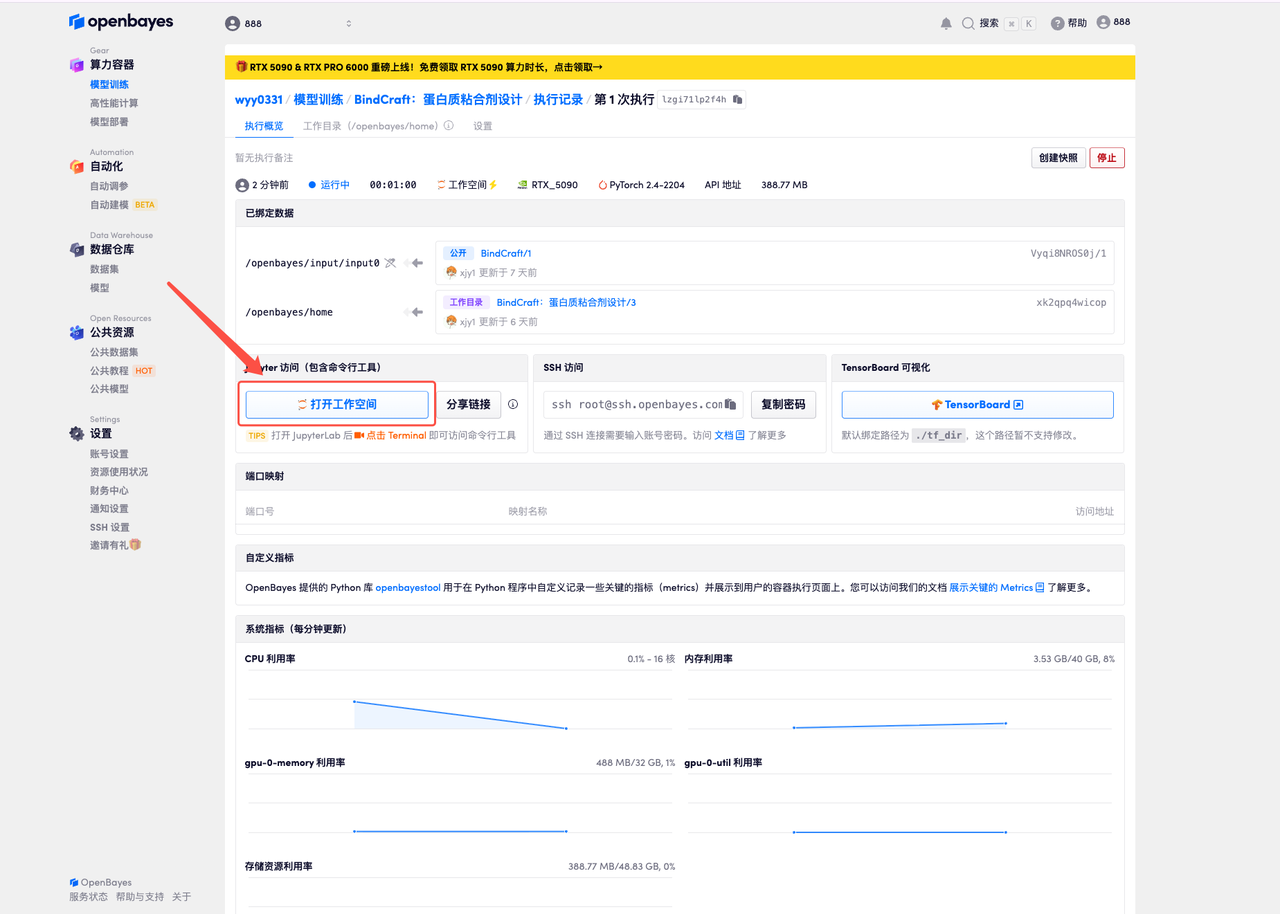
5. The following is the BindCraft usage page. Click "README" to jump to the generation interface.
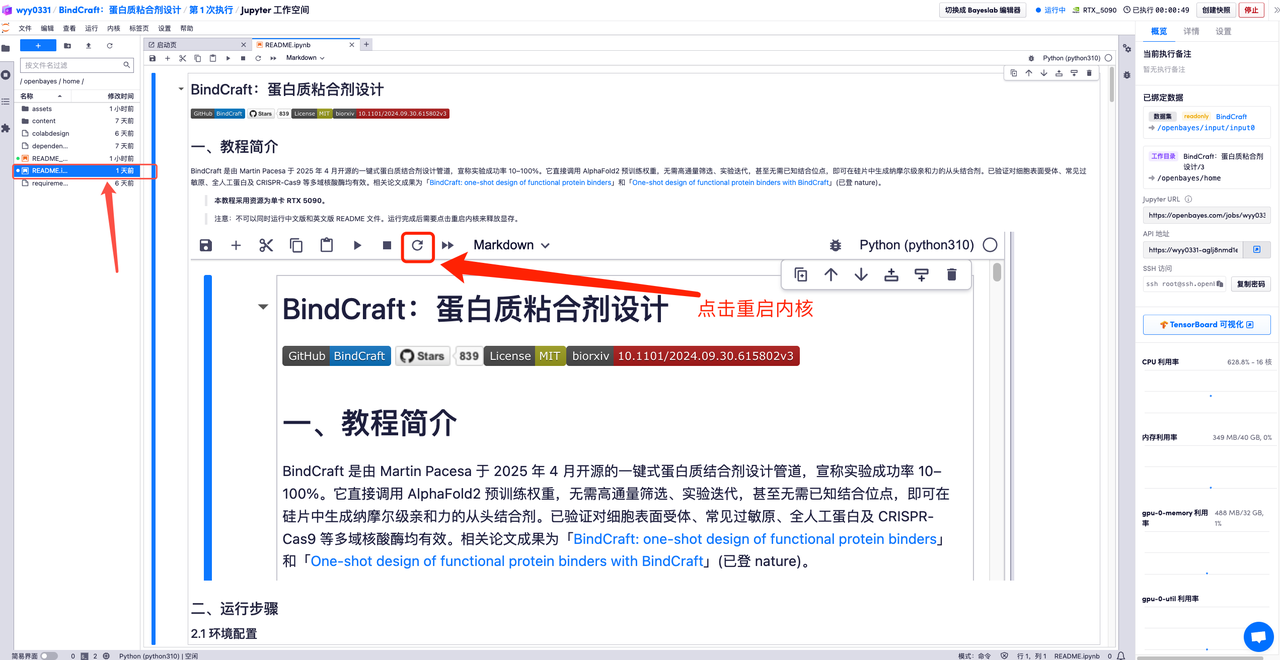
Effect Demonstration
1. Please complete the relevant parameter settings according to the README parameter instructions
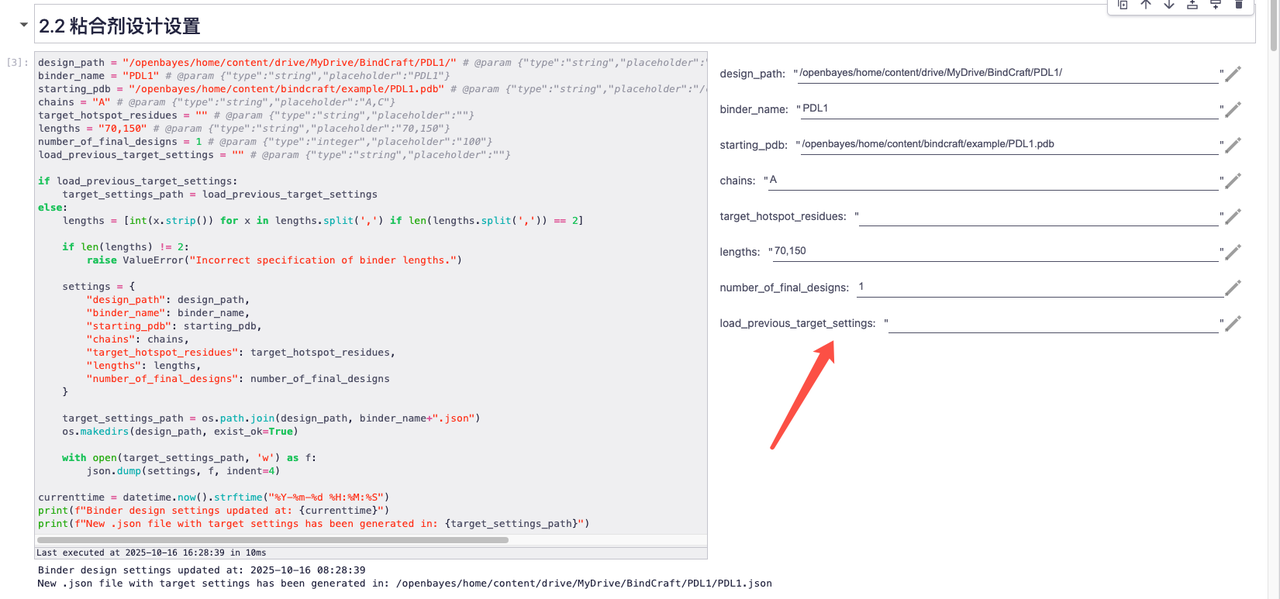
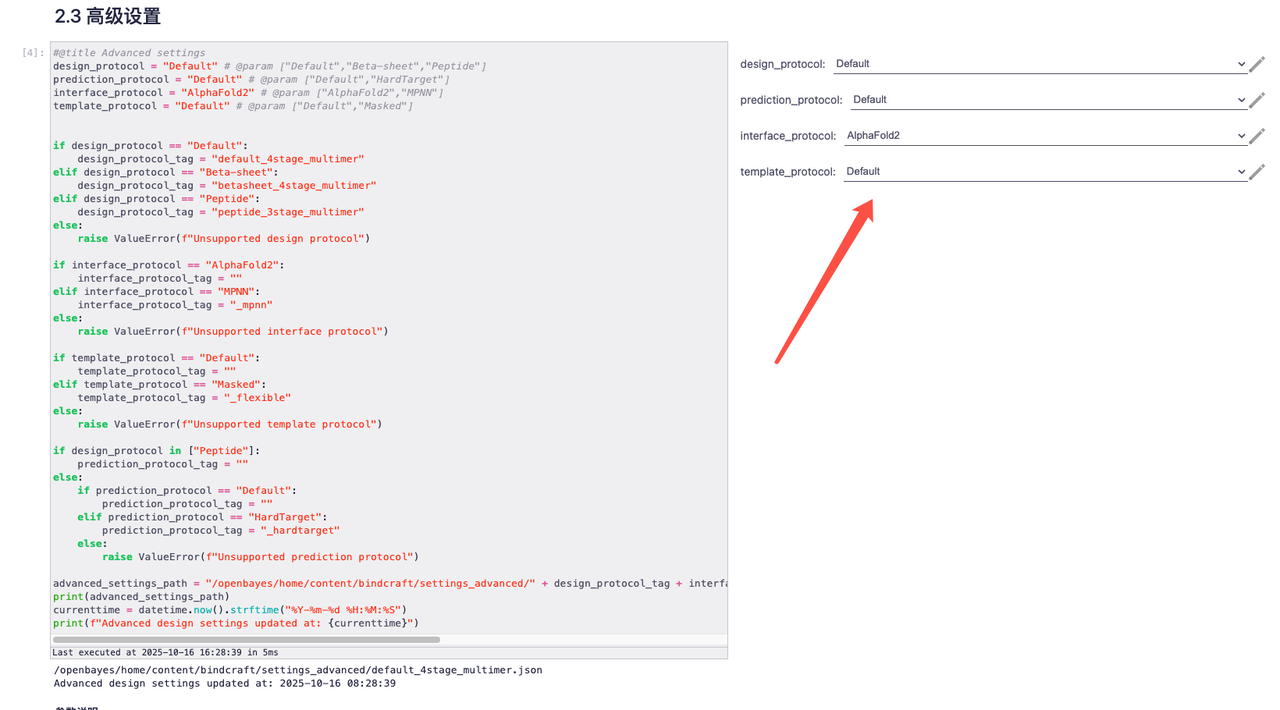
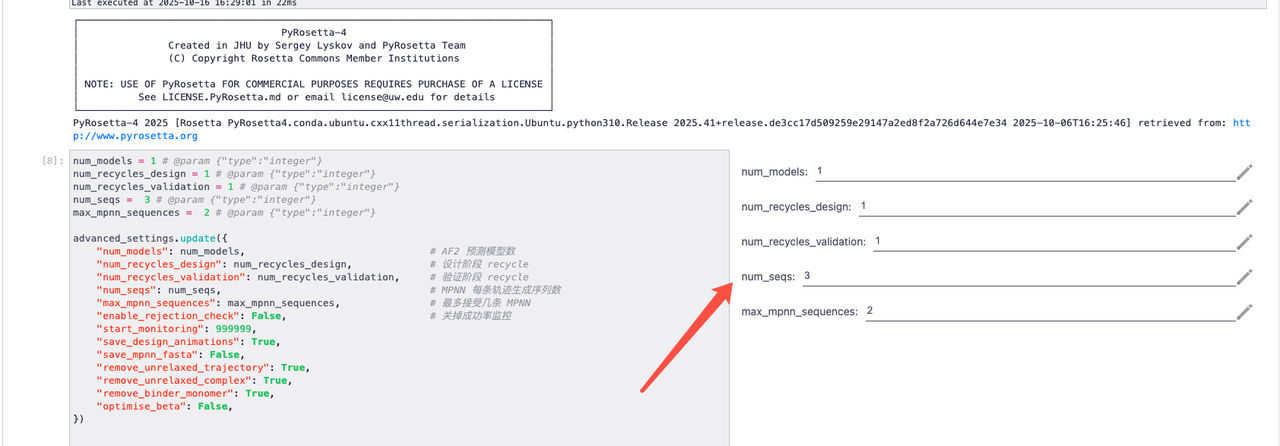
2. Taking the default parameters as an example, the relevant effects are as follows
The effect of "top-level design" is as follows:
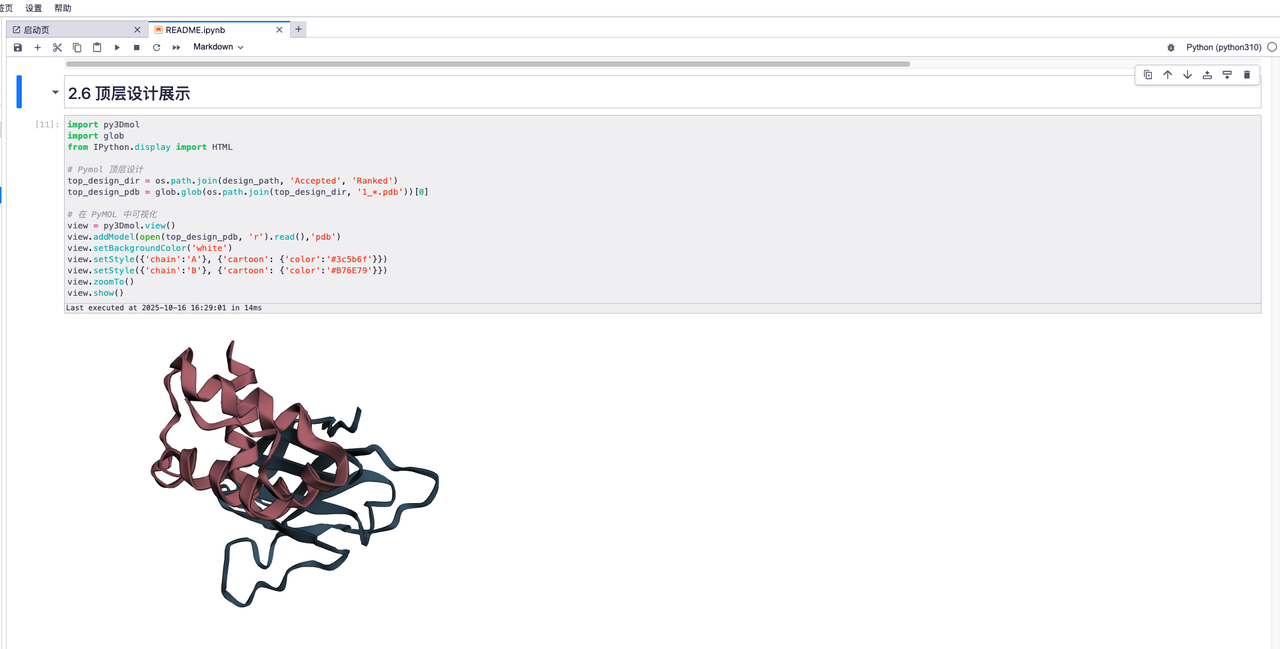
"Show animationy" effect, please watch the video below:
The above is the tutorial recommended by HyperAI this time. Everyone is welcome to come and experience it!
Tutorial Link: